|
“But...that doesn't make any sense...!' 'It does if you're a goat.” ~ Linda Medley, Castle Waiting, Vol. 2 The next morning we did BOSE shots. Joanna had said it would be okay to let them wait a day. Each boy got a dose of BOSE and you would have thought we were killing them. Oh how they cried! Which made momma pace back and forth quite a bit. Siggie checked everyone of them over after they got their shots. Each buckling got it's own sticker for being good sports along with snuggles. Donald with Tiny Hiney Farm L1 trying to suckle. Tiny Hiney Farm L3 getting his snuggles. Tiny Hiney Farm L2 after his BOSE. More Eskimo Kisses. Guess it is what you do with baby goats. (L2) Now that this part is done, we get to gear up for CDT shots. Oye! Not looking forward to that one either or disbudding. Baby steps and learning along away. We got this! Now if someone can tell us how long iodine stays on white fur?
0 Comments
Beautiful does at the Franklin County Fair 2018. As we wrote in our first two blogs, CAE is a devastating disease. It is one that once in your herd needs to be removed before each animal is infected. There are a few ways to help out with keeping your herd clean of Caprine Arthritis Encephalitis. It includes testing, pulling kids from CAE positive does at birth, keeping a closed herd, and culling infected animals from your herd. Each one of those precautions are pretty self explanatory, but we will go over them anyways. It is always nice for have information at our finger tips. Not to mention never being afraid to ask questions. Little Liberty, born on July 4, 2017. Gone a month later. Momma was Lucky. The very first thing that can help keep CAE out of your herd is if you only buy from breeders who have a clean herd and papers to say that they are clean by testing for Caprine Arthritis Encephalitis. A lot of people say that they have a clean herd and in truth be told they have never tested and don't know themselves. Hence, how we ended up in our situation in part 1 of this series. A good breeder will have no problems with showing you this paperwork. They will either test bi-yearly (half herd fall, other half spring), yearly, or every two years. Every two years would be more for someone who has a closed herd. Personally, we are buying from breeders who only test and are willing to show us the papers saying who was tested, the results and when. This lesson is one we don't want to repeat. Another part of the judging at the Franklin County Fair 2018. Quarantine any new goats that you buy and bring into your herd. This way you can watch them and see how they react to the stress of the move. If there is any issues that might arise in the two weeks after arriving. In the case that you did happen to purchase a goat that wasn't from a tested herd, keep them in quarantine and either have the vet come out or draw the blood yourself to test. I will post some labs down at the bottom if you choice to do your own testing. The vet used Cornell University when she did ours last year, and we used WADDL this year. After you receive a negative result the goat can then be introduced to the herd. Make sure that the animal is over six months of age or the results might not be accurate. Ivy Creek's T Lil' Cavan Aug. 2018 If your animal is sick and needs shots, do not share needles. That is another way to pass CAE from animal to animal. Though it can be passed through all types of bodily fluids. If your doe is CAE positive and she is bred, the babies must be pulled at freshening. It is important to get them as soon as they hit the ground. Take them inside and wash them with Dawn dish detergent. Afterwards, you need to feed them colostrum from an uninfected goat or colostrum replacer. The same goes for the milk. You could take mom's milk and pasteurize it if she is milk-able and her utter hasn't gone hard. However, you take the chance of not killing all the living organisms of Caprine Arthritis Encephalitis and passing it to the kid that way. We used the replacer option for both colostrum and milk replacer as we didn't have a doe to feed the kids from. Then the infected doe needs to be kept from the other does while she cleans up. I know some people run their animals together but at this time with blood and milk that isn't a chance we would take. Jazlyn hugging her favorite girl, Siggie. This is every night. Again as stated that taking your animals off the farm or bringing new animals in increases the risk of CAE each time. Some goat owners have decided to have closed herds and do their breeding by having enough lines to keep relations not so close. This can be done. Just takes a little time to get there. However, closed herds do not participate in shows or LA Scorings. Taking your animal to shows, etc. is putting them in possible contact with CAE goats. Shows do not make testing a requirement. This is a shame due to the fact that it keeps the disease circulating around. There are some precautions that different shows take, like putting solid wall spacers between animals and a walk through area on the other end of your pen. Having areas all set up away from each other and goats are only in contact briefly in the show ring. Separate milking areas at the shows. The goats are vet checked before going and checked at the door for any visual signs of sickness or abscesses. We still want to show as there are five little ones in our home that are excited about showing their goats. It will happen for them. Just leery of leaving our four legged family members for a week at an exhibit. It will be alright, we know. First time jitters. If you do have a goat infected with CAE and you don't want to take a chance with it there are some options. You could give it to someone who doesn't have a breeding program or uninfected goats. This we believe is still a chance that they will either change their mind and breed or they will give the CAE goat to someone else and that person will breed it. All the while being completely unaware of the deadly death sentence that is carried within that animal. We know that there are some CAE goats that have made it to live long and healthy lives. Is that a chance we should take for the percentage that don't? We know that our hearts can't take watching one of our goats waste away, and the tears in our children's eyes.
In our case we decided to cull them from our herd. It isn't an easy decision to take a life that is still active. None the less it was a decision we felt was best for our farm and herd. Now that we have learned so much about this disease and learning more each time we read up on it. It is our hope that this little series can help others see that this disease should be taken seriously. The effect on the quality of the animal should be enough to make breeders strive for better. If there is anything that we left, please feel free to leave us a comment or send us an email. Thank you. Have a blessed day. This little white lady is resting after a busy day at the St. Lawrence County Fair. What is CAE? That is an abbreviation in the goat world that rides the breeze like a whisper. CAE is known as Caprine Arthritic Encephalitis. Some have even heard of it called the Silent Killer. Isn't that a terrible name? To us it brings images of sleeping and having something dark and hideous creeping up on you. All the while you are there completely unaware what is around you. CAE can be found in Africa, Australia, Europe, New Zealand, and North America. Here is the hard fact that only a percentage of people who own goats are aware of the diseases that goats have or how contagious these diseases are. Hardy as a goat, right. Nope! No such truth in that. These creatures take a lot of proper care and diet. It is all worth the work when you meet them and fall in love with their personalities. That might be the big part of why, for those that do know about this disease, it is so hard not to keep the animal, continue breeding, because we do fall in love with them. It isn't easy to spot CAE in all goats. Most goats can live their entire life out with out showing one single symptom at all. If a goat doesn't appear to be sick, then what is the problem? The problem comes for those who do show symptoms. A young kid goat who is infected with CAE can have awful encephalitic seizures that will kill them. It is more often that goats show symptoms in their adult years. This girl wasn't fazed at all with us coming around. She continued browsing. This disease is a retro-virus. A retro-virus is any group of RNA viruses that insert a DNA copy of their genome into the host cell in order to replicate it. What does this mean in English? It means that a goat who is CAE-positive does not have the antibodies to fight off this disease. Caprine Arthritis Encephalitis is a lot like our human version of AIDS, which is another retro-virus. CAE can not be passed to humans. Consuming the milk or meat of a CAE infected animal is safe. Caprine Arthritis Encephalitis can be found in both dairy and meat goats. It doesn't discriminate. Just like AIDS doesn't discriminate from men to women. Now, there are many ways to transfer CAE from goat to goat. The percentage of some are higher than others. Though, the studies of what percents are accurate are still going on. How is Caprine Arthritis Encephalitis Transfered:
*This disease is transferred through white-blood cells. Any bodily fluid that contains white-blood cells can transfer the disease. **How can we get try to prevent the passing from doe to kid? We'll get to that in Help Prevent CAE...Part 3. There are at least five types of CAE. They are Arthritic CAE, Encephalitic CAE, Pneumonic CAE, and Mastitic CAE. Each one of these has slightly different symptoms. None of them are curable. There have been studies that some goat owners are using resources to help manage CAE. That will be in the Help Prevent CAE...Part 3. Arthritic CAE: shows symptoms that consist of walking on knees, swollen joints, weight loss, reluctance to walk, abnormal posture, stiffness, reluctance to rise, and lameness. Encephalitic CAE: shows symptoms that consist of head tilt, blindness, depression, in-coordination, progressive paralysis, seizures, and inappropriate placement of limbs. This is mostly found in young kid goats. The seizures are deadly. Pneumonic CAE: shows symptoms that consist of weight loss, deep chronic cough, and difficulty breathing. Mastitic CAE: shows symptoms that consist of hard, swollen udders and decreased milk production. *Chronic wasting disease is included in this disease category. It could show up in an effected goat by itself or with one of the other CAEs. Each one of these is painful and reduces the quality of life for the goats that have it. Saddening really. Plus, if you are a dairy goat farm, the reduction of the milk can hurt your production by a lot. Again, CAE isn't passed to humans and can not harm them if they consume milk or meat from an infected goat. A mother and kid boar goats. Love the color of the kid. This disease truly saddens us. It is not hard to eradicate it. However, the ways of cleaning a herd up is to cull the infected goats. If a goat has something that can cause suffering wouldn't it be better to not let it get to that point or to not pass it on to the next generation? We don't like animals suffering here on our farm. It is our mission to provide them with the best possible life we can. With that being said in all good faith it is against what we believe to pass on infected goats. This just keeps the vicious cycle going. Please research and ask the breeder questions. Be sure if they say that they have a clean herd, you see the papers proving the herd is clean. When were they tested last? Did they take the animals to shows after testing? Has any new animals arrived at their farm since testing? Were those animals tested before or after they arrived? It might seem like a million questions, however, a breeder who really cares for the health and livelihood of their goats will answer these questions for you. In truth, those goats they are selling are their business. They have worked hard for them. Their name is on the registration papers. So please ask away. Below are a few links. Be on the look out for the final section covering this disease, Help Prevent CAE...Part 3.
The past two weekends while we were out, we talked to quite a few different people about goats, showing, and the diseases that they can carry. Diseases that are contagious. In this department people need to be more educated. There needs to be more caution taken when breeding, raising, and selling our livestock. Education is the key. I'll admit we lacked it when we started out. Here is our story. No judgement please. It could have been far worse. We want other's to avoid this heartache. Tiny Hiney Farm with Lapis, Rouge, and Vixen at the first Fantasy Faire. Photograph ©Cindy Edwards A beautiful doe from the St. Lawrence County Fair. We started our journey with goats about 8 years ago with a Saanen and a Saanen/Nubian cross. Then we added a little Nigerian Dwarf buckling who was more than likely crossed with something with fiber. A trip to the auction barn brought home three more goats. We had our ups and downs with them. But that is the way of a farm life. We didn't know then what we know now about some of the husbandry that went into goat care. They are supposed to be hardy right? We will get to that later. Our first set of babies born on our little hobby farm. Crosses but we loved them. Then a year and a half ago we decided to take and raise Nigerian Dwarf goats as our choice breed. At first we didn't care about registration, which we later changed our mind on. Go figure! That is the way it always goes. We asked the question to the breeders for the goats we were picking up to add into our herd. Do you have a clean herd? The unregistered homes said "yes we do." Oh, how naive and trusting can we be? Please, don't answer that. When we had a mix of our first goats we got, our unregistered goats, and a couple registered goats, we called the vet to do a testing of the herd. Surprise when one of our goats came back with CAE at a very high percentage. To say we were upset is putting it lightly. This girl was only a little over a year old and bred. A trusting lab, Cornell University did the test, through the vet. Her sister, we were sure was positive, too. They were not able to get a full specimen from her. She was also bred. Now it was time to do some research. We separated the infected girls from everyone else. Watched them like hawks for signs of kidding. Pulled the babies as soon as they hit the ground twins does from one and a singleton doe from the other. Amber, who had twins we milked out. The babies were all bottle raised with colostrum replacer and milking supplement. We didn't have any others in milk or knew anyone to get goat milk from. Lucky, couldn't be milked, she ended up with going into a hard utter and she went symptomatic. We lost her and her little doe a short while later after birth. Devastating isn't it? Amber playing on the play gym. Anyone who has lost a goat or has had a goat suffer from CAE knows it is a horrible disease. We refer to it as the HIV for goats here at our form. Heartbroken at something that with proper care could be avoided. Now what did we do with our infected doe that was left and our two twin doelings? Peanut passed away during the winter. She was healthy and then the next morning gone. No signs of anything wrong at all. Truly not sure of the cause. Amber, we couldn't justify passing her on to a home that "might" promise not to breed her. A hard decision but we decided to cull her and not take the chance of having spread this disease any further. The last little doeling, Buttercup has been tested and is free and clear of CAE/CL/Johnes. Our hearts were happy when we heard this news. To have a beautiful, little doeling that has a fighting chance after all her odds were against her. She is one of the lucky ones. Now that we know this, Buttercup is available for a new home. We will be doing screenings looking for the spot that is perfect for her. Our little miracle Buttercup. Hard to get a photograph because she is on you like static clink. In light of all the experience that we went through, our whole herd was tested June 2018. Every single goat came back negative for CAE/CL/Johnes. A clean herd for us. We are going to strive hard to keep it that way. When our kids are born next year we will work on an education package for new goat owners. If anyone has any questions we are here for them. Somethings though we're still learning. It's a process. Now, for those who don't know what CAE is please do your research, or stay tuned for the next part to this blog which will post next Wednesday. Blessed be to you all.
|
Kimberly Doerr
|
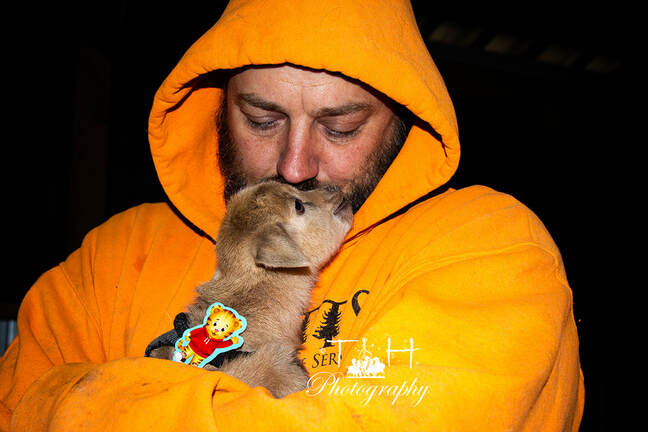
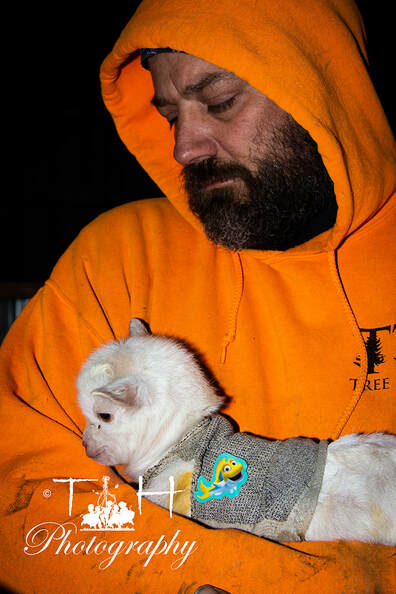
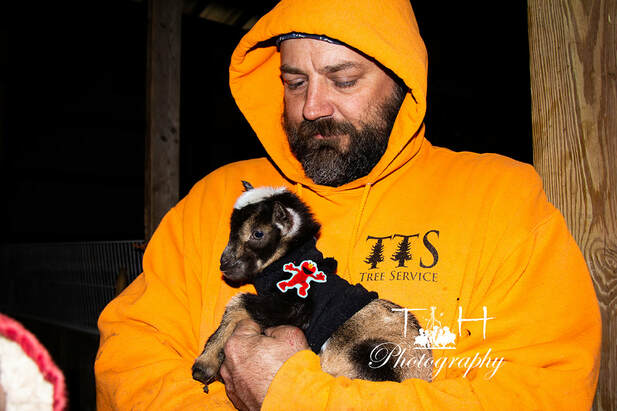
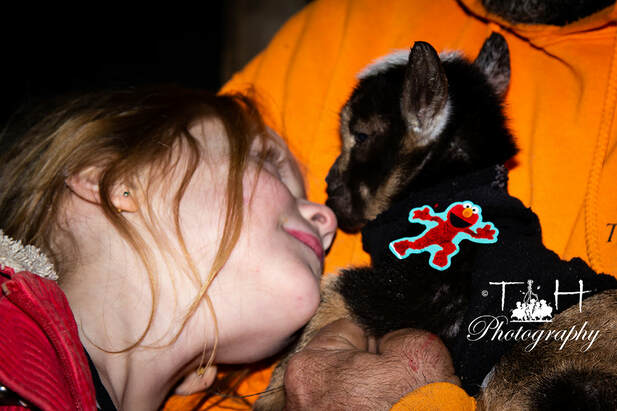
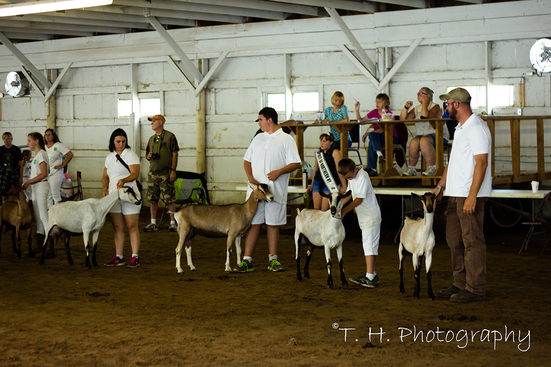
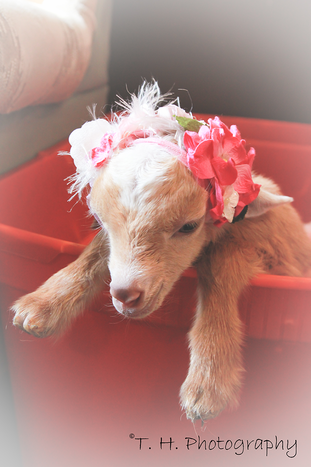
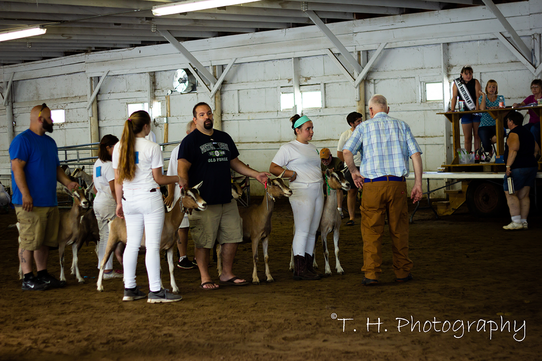
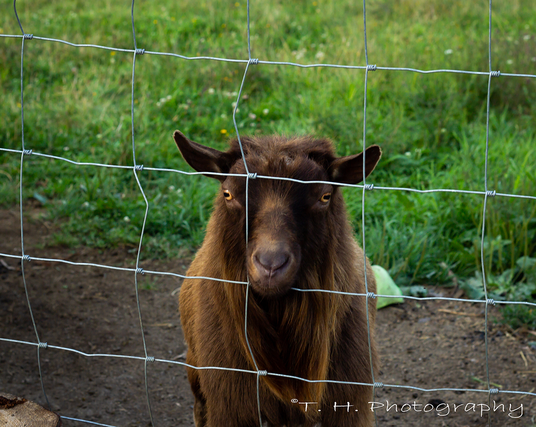
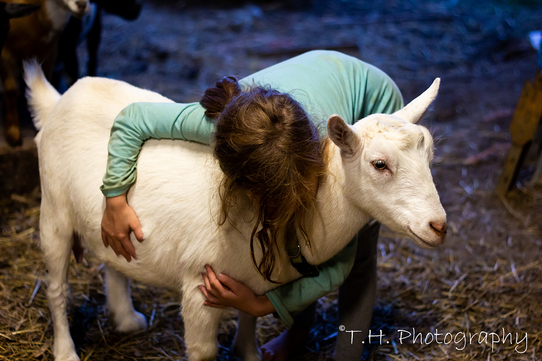
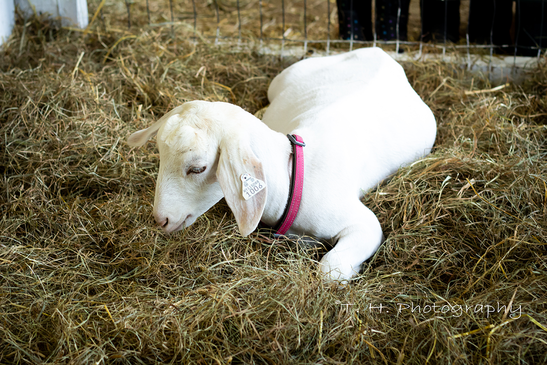
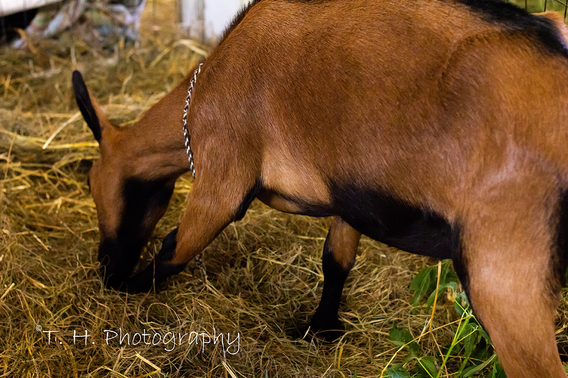
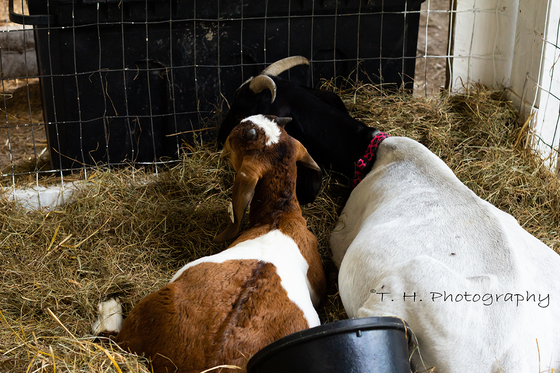
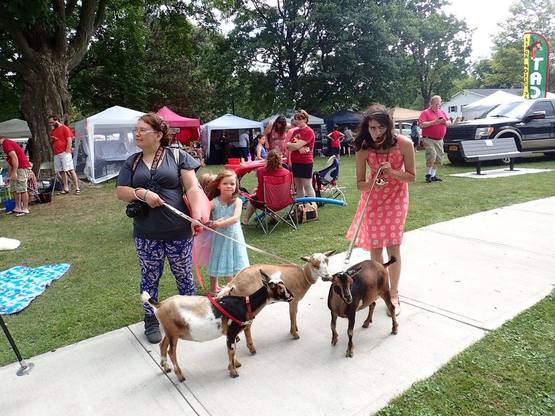
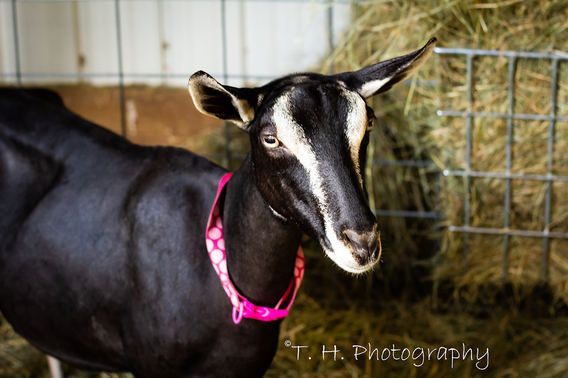

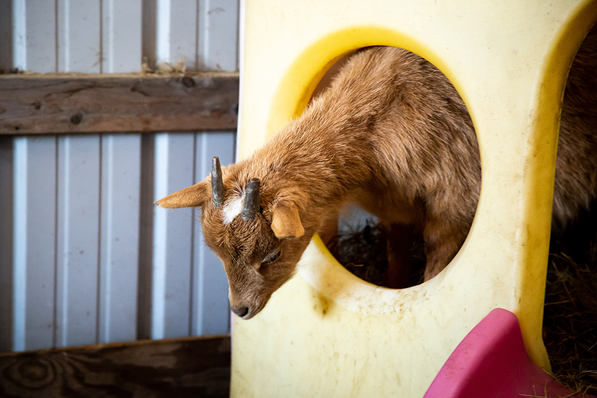
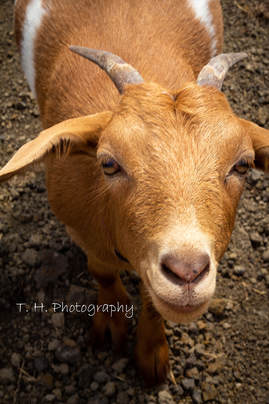
 RSS Feed
RSS Feed